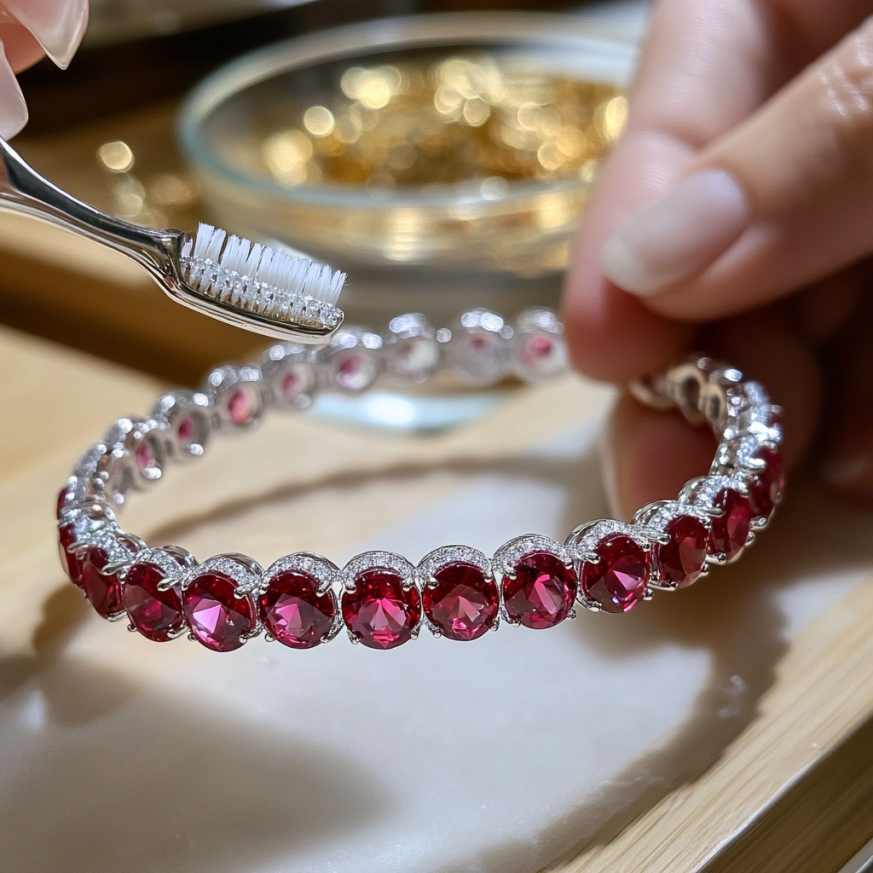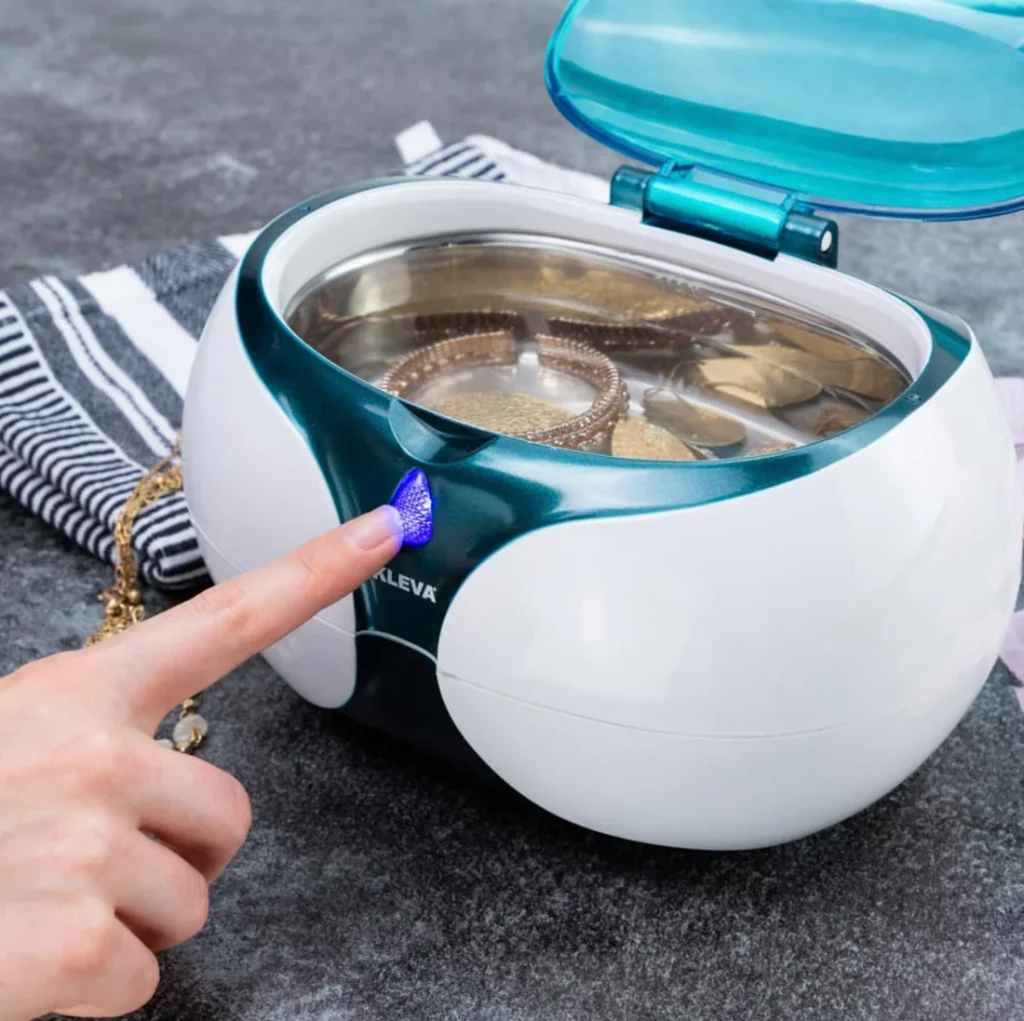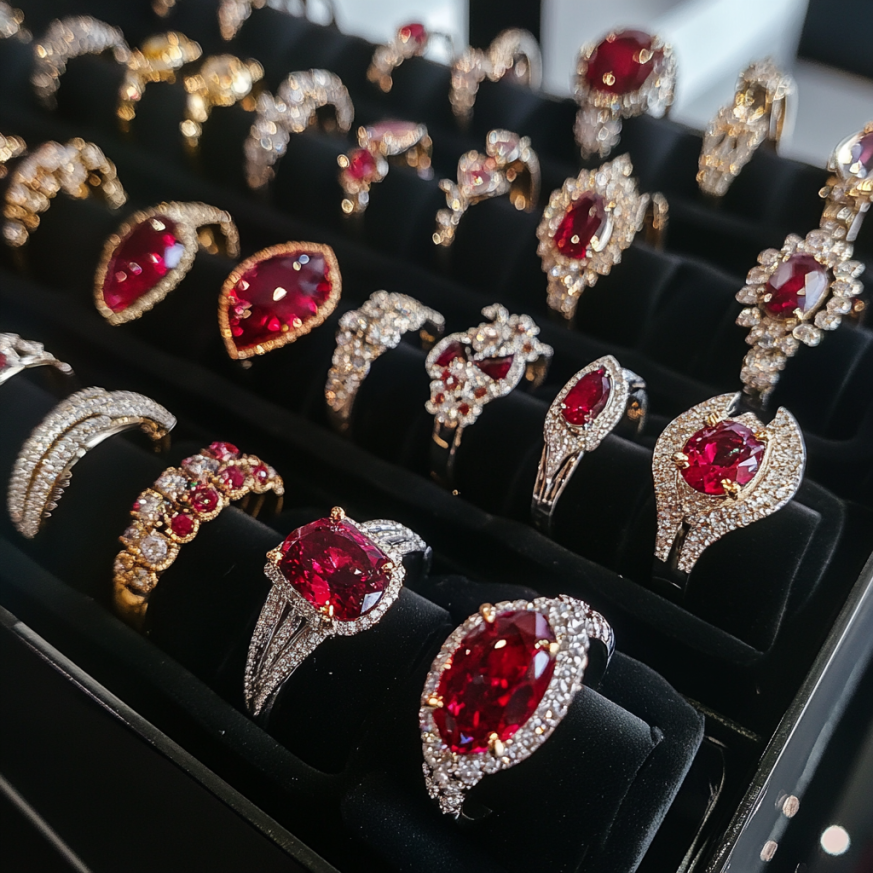Best Ruby Cleaning Methods
Proper care and maintenance are essential to preserving the beauty and longevity of your ruby gemstone. While rubies are durable, they still require careful handling to maintain their brilliance. Understanding the best ruby cleaning methods ensures that your gemstone remains in top condition, whether it is natural, treated, or set in fine jewelry.

1. Understanding Ruby Hardness and Durability
Rubies rank 9 on the Mohs hardness scale, making them one of the hardest gemstones. However, certain treatments—such as lead-glass filling or oiling can make rubies more delicate and prone to damage. Before cleaning, it’s important to determine whether your ruby is untreated or has undergone enhancements.
2. Safe Ruby Cleaning Methods
A. Gentle Soap and Water Method (Best for All Rubies)
This is the safest and most effective method for cleaning both natural and treated rubies.
Steps:
- Prepare a cleaning solution: Mix warm water with a few drops of mild dish soap.
- Soak the ruby: Let the gemstone sit in the solution for 5–10 minutes.
- Gently scrub: Use a soft toothbrush to clean the ruby, focusing on any dirt or buildup.
- Rinse thoroughly: Wash with clean, lukewarm water.
- Dry properly: Use a soft, lint-free cloth to pat the ruby dry.
Best For:
- Untreated rubies
- Heat-treated rubies
- Fracture-filled or oiled rubies (as long as they are handled gently)
B. Microfiber Cloth Polishing (For Light Cleaning)
If your ruby doesn’t require deep cleaning, simply wiping it with a soft microfiber cloth can help maintain its shine.
Steps:
- Use a dry microfiber cloth to wipe away dust and fingerprints.
- If needed, slightly dampen the cloth with warm water and gently rub the stone.
- Dry immediately with another clean, soft cloth.
Best For:
- Everyday maintenance of ruby jewelry
- Keeping untreated and treated rubies free from fingerprints
3. Cleaning Methods to Avoid
A. Avoid Ultrasonic and Steam Cleaners (Risky for Treated Rubies)
- Ultrasonic cleaners use vibrations that can damage rubies with fractures, lead-glass filling, or oiling.
- Steam cleaning exposes rubies to high temperatures, which can alter treatments or cause inclusions to expand.


B. Avoid Harsh Chemicals and Acids
- Household cleaners, bleach, ammonia, and acidic solutions can degrade treatments and damage fracture-filled rubies.
- Jewelry cleaners containing harsh chemicals should not be used unless labeled safe for rubies.
C. Do Not Soak Lead-Glass-Filled Rubies for Too Long
- Lead-glass-filled rubies are delicate and prolonged soaking can weaken the filler.
- A quick rinse and gentle cleaning are safer alternatives.
4. Storing Rubies to Keep Them Clean
- Store separately: Keep rubies in a soft pouch or jewelry box to prevent scratches.
- Avoid direct sunlight: Prolonged UV exposure can impact certain treated rubies.
- Remove jewelry before activities: Take off ruby rings and bracelets before cleaning, exercising, or using chemicals.

5. Professional Ruby Cleaning
For valuable or delicate rubies, periodic professional cleaning by a jeweler is recommended. A jeweler can assess the stone’s condition and clean it safely based on its treatment history.
Conclusion
Using the best ruby cleaning methods ensures your gemstone retains its brilliance and longevity. A mild soap and water solution is the safest cleaning option, while harsh chemicals and ultrasonic cleaners should be avoided, especially for treated rubies. Regular maintenance and proper storage will keep your ruby jewelry looking radiant for years.
For more details, explore Ruby Gem Testing Methods to understand how professionals assess a ruby’s authenticity and quality.
